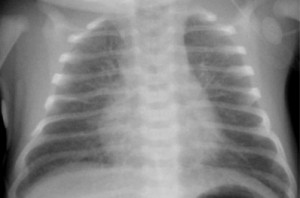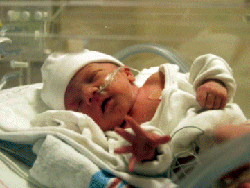Bronchopulmonary Dysplasia is a respiratory disorder that affects many premature newborns around the world, particularly those with congenital respiratory conditions. Read and know all about this disorder, including its possible causes, symptoms, treatment options, prognosis and more.
Bronchopulmonary Dysplasia Definition
Page Contents
- 1 Bronchopulmonary Dysplasia Definition
- 2 Bronchopulmonary Dysplasia ICD9 Code
- 3 Bronchopulmonary Dysplasia Etymology
- 4 Bronchopulmonary Dysplasia Incidence
- 5 Bronchopulmonary Dysplasia Symptoms
- 6 Bronchopulmonary Dysplasia Causes
- 7 Bronchopulmonary Dysplasia Risk Factors
- 8 Bronchopulmonary Dysplasia Diagnosis
- 9 Bronchopulmonary Dysplasia Treatment
- 10 Bronchopulmonary Dysplasia Prognosis
- 11 Bronchopulmonary Dysplasia Complications
- 12 Bronchopulmonary Dysplasia Prevention
- 13 Bronchopulmonary Dysplasia Pictures
Bronchopulmonary Dysplasia (BPD) is an acute lung disorder that affects infants, especially premature ones who require oxygen therapy. It is one of the most common chronic lung disorders in children, along with cystic fibrosis and asthma.
The condition was earlier referred to as “Chronic Lung Disease of Infancy.” It is now also known as “Chronic Lung Disease (CLD) of prematurity.”
Bronchopulmonary Dysplasia ICD9 Code
The ICD9 Code of this disease is 770.7.
Bronchopulmonary Dysplasia Etymology
The name of this disorder comes from a fusion of three terms “Broncho”, “Pulmonary” and “Dysplasia.” Brocho refers to the bronchial tubes or airways through which oxygen goes to the lungs. The word “Pulmonary” stands for the tiny air sacs in the lungs known as alveoli where carbon dioxide and oxygen are exchanged. “Dysplasia” refers to abnormal changes in the organization or structure of a cluster of cells.
Bronchopulmonary Dysplasia Incidence
Every year, around 5,000 to 10,000 babies born in the U.S suffer from this disease. Today, the condition is found to affect more babies than were affected 30 years ago. This has been made possible by advances in medicine and medical technology due to which more premature babies can survive now. The overall incidence of this disorder is reported at 20% in newborns who are provided ventilator support.
Bronchopulmonary Dysplasia Symptoms
BPD usually arises as a complication in premature infants who are treated for Respiratory Distress Syndrome (RDS), a condition characterized by improper development of the lungs of a baby which makes it difficult for it to inhale as much air as required.
Babies affected with this disorder suffer from scarring and inflammation in the lungs. Some other typical signs and symptoms of this disease include:
- Coughing
- Wheezing
- Sucked-in chest and ribs
- Blue coloration of nails and lips due to lack of enough oxygen in the bloodstream
- Rapid, shallow breathing
- Poor posture of the shoulders, neck and trunk
Many babies affected with BPD exhibit the symptoms of Respiratory Distress Syndrome, which include:
- Tachycardia, or abnormally rapid heartbeat (more than 100 beats every minute)
- Tachypnea
- Frequent desaturations
- Increased efforts at respiration (with grunting, nasal flaring and retractions)
Infants with BPD are often very immature. They have a very low birth weight and suffer from severe loss of weight during the first fortnight of life. During the period between the second and fourth weeks of life, both ventilator support and oxygen supplementation are often increased to maintain oxygenation and proper ventilation.
Bronchopulmonary Dysplasia Causes
The exact causes of BPD are not known. However, most cases of the disease are found to arise after infants are put on ventilators. Due to this reason, doctors believe that forced administration of air damages developing lung tissue.
The disorder most commonly arises as a complication of respiratory therapy in infants who are premature and affected with RDS. Babies with RDS must get adequate amounts of oxygen. An apparatus is often required to help them breathe and prevent brain damage in sufferers and save their lives. However, administration of oxygen in premature infants can damage their lungs and result in inflammation. This can damage the airways. Excessive amounts of oxygen can also reduce the normal pace of development of the lungs in babies who are extremely premature.
Administration of oxygen into the lungs of premature babies by breathing equipments, like respirators or ventilators, may further aggravate the condition. Such machines make use of pressure to push air into the lungs. However, the use of pressure can irritate the lungs and make them swell even more. This problem can be avoided by the use of a simple measure. Oxygen may be administered to babies through the nose with a CPAP (Continuous Positive Airway Pressure) machine.
BPD may also arise due to infection in the lungs of premature babies. The infections may cause swelling and result in the narrowing of respiratory passages.
Bronchopulmonary Dysplasia Risk Factors
The condition is seen most in infants who are born extremely premature, more than 10 weeks prior to their date of delivery. The risk of BPD is also great in newborns with low birth-weight (less than 1,000 grams or 2.2 pounds).
Bronchopulmonary Dysplasia Diagnosis
The diagnosis of BPD can include the following techniques:
Laboratory tests
Lab tests are used to assess and monitor infants affected with BPD and include:
- Pulmonary function tests
- Arterial blood gas (ABG) levels, to determine the presence of acidosis, hypoxia (with elevated oxygen requirements) and hypercarbia
- Transcutaneous or end-tidal carbon dioxide levels, which are used to determine trends, particularly whether the results have a correlation with ABG levels
Doctors may use Pulse oximetry to monitor oxygenation of blood constantly due to frequent desaturations. Blood pressure should also be monitored on a routine basis as infants affected with BPD may also develop Systemic hypertension.
Imaging studies
Doctors may use the following radiographic studies to assess the condition of infants suspected with BPD:
- Chest magnetic resonance imaging (Chest MRI)
- High-resolution chest CT (Computed Tomography) scan
- Chest radiography, to assess the acuteness of BPD and differentiate the disease from air leak syndrome, pneumonia and atelectasis
Lung biopsy
Other procedures such as Lung biopsy in preterm infants with BPD may demonstrate results from pathologic stages like:
- Acute lung injury
- Proliferative bronchiolitis
- Exudative bronchiolitis
- Obliterative fibroproliferative bronchiolitis
However, the condition is generally detected by an X-ray examination of the chest of affected infants when they are still recovering from RDS. X-rays may reveal spongy appearance of lungs in babies with BPD.
Bronchopulmonary Dysplasia Differential Diagnosis
The differential diagnosis of BPD involves isolating its symptoms from those of other disorders, such as:
- Pneumonia
- Pulmonary atelectasis
- Cystic fibrosis
- Patent ductus arteriosus
- Obliterative bronchiolitis
- Postinfective bronchiectasis
- Subglottic stenosis or tracheomalacia
- Poorly responsive infant respiratory distress syndrome (RDS)
- Air leak syndromes (including pneumoperitoneum, pneumomediastinum, pulmonary interstitial emphysema, pneumopericardium, pneumothorax and subcutaneous emphysema)
Doctors should confirm that the symptoms reported by sufferers are those of BPD and not of any of the above-mentioned conditions.
Bronchopulmonary Dysplasia Treatment
Infants affected with BPD are generally treated in the neonatal intensive care unit (NICU) in hospitals until they are able to breathe properly on their own, without the aid of a ventilator. A suffering infant can spend anytime between several weeks to several months in the NICU.
While in the NICU, infants with BPD are kept warm with the aid of an incubator or a radiant warmer. Fluids and nutrients are administered to them in an intravenous manner. The heart rate, blood pressure, temperature, fluid intake and respiration are monitored.
Babies affected with BPD are usually cured with medicines like:
Diuretics
Diuretics like Furosemide are used to reduce the accumulation of fluid in the lungs
Bronchodilators
Bronchodilators like Albuterol are used to help keep the respiratory passages in sufferers open.
Antibiotics
These are sometimes required to combat bacterial infections as infants with BPD are more likely to suffer from Pneumonia.
Steroids
Acute cases of BPD might be cured with the aid of a short course of steroids. However, steroids are only used after discussions with parents of sufferers as these are strong anti-inflammatory medications that have some serious short and long term side effects.
High-calorie formulas
In infants with BPD, who are sick enough to be hospitalized, a gastric tube may be inserted into the stomach. High-calorie formulas may be fed to them to ensure that they receive enough nutrients and calories to grow about as normally as other children.
Bronchopulmonary Dysplasia Prognosis
Many infants with BPD manage to recover and many of them are able to lead active, normal lives. The process of recovery may be slow. Suffering babies may need to continue medicines and breathing therapy or even oxygen administration at home even after leaving hospital. Oxygen supplementation may be stopped in the majority of infants by the end of the first year after their birth. A few babies with acute cases of BPD may require a breathing apparatus known as a ventilator for a number of years. In rare cases, they may need it as long as they live.
Bronchopulmonary Dysplasia Complications
During the first two years of their life, babies affected with BPD may suffer from multiple cases of lung infections. Parents with premature babies suffering from cough, cold, fever or runny nose should take them to a doctor for proper check-ups and treatment.
Majority of BPD sufferers have few respiratory problems within one or two years. They do not require any specific medical treatment and are not restricted in their daily activities.
Although most infants eventually outgrow the acute signs and symptoms of BPD, the condition along with other complications involved with prematurity can be life-threatening in rare cases.
Bronchopulmonary Dysplasia Prevention
The occurrence or aggravation of this condition can be prevented by the following measures:
- Regularly visiting a healthcare provider during pregnancy
- Adhering to a healthy diet
- Avoiding consumption of alcohol, smoking and illegal medicines
- Washing hands regularly and avoiding patients of flu or colds in order to prevent infection
- Taking steps to properly manage any health issues that might be present
In women who have a history of premature delivery, physicians may administer medications to help delay delivery. If a doctor suspects that a baby is premature, he may administer its pregnant mother with medicines (in an injected form) to help hasten the development of the lungs as well as various other organs. Medications can also help lower the risk of development of Respiratory Distress Syndrome (RDS) in affected babies.
Bronchopulmonary Dysplasia Pictures
The following images show the physical appearance of infants suffering from BPD.
Picture 1 – Bronchopulmonary Dysplasia
Picture 2 – Bronchopulmonary Dysplasia Image
Parents of preterm newborns should not ignore any health problem exhibited by their children and report all issues to concerned doctors on an immediate basis. Although the majority of BPD sufferers survive the stage of infancy, they tend to be susceptible to infections, growth delay, cardiac and neurological dysfunction and asthma. Hence, it is imperative for parents to report health problems immediately.
References:
http://en.wikipedia.org/wiki/Bronchopulmonary_dysplasia
http://reference.medscape.com/article/973717-overview#showall
http://www.patient.co.uk/doctor/Bronchopulmonary-Dysplasia.htm
http://kidshealth.org/parent/medical/lungs/bpd.html


